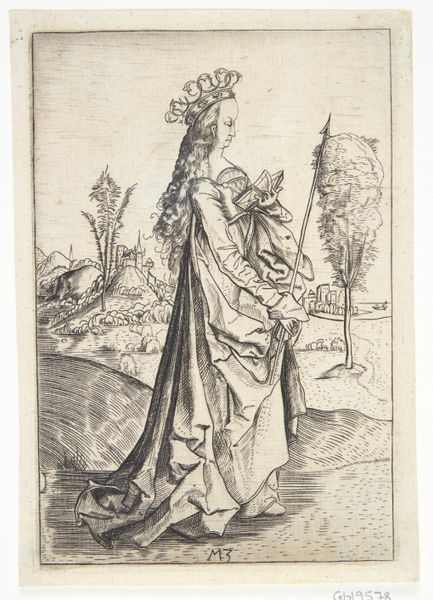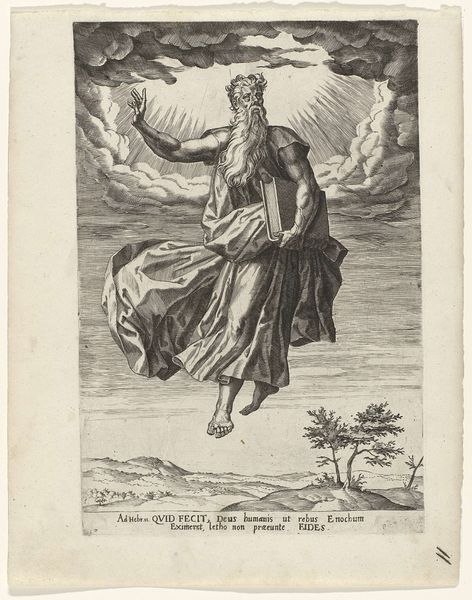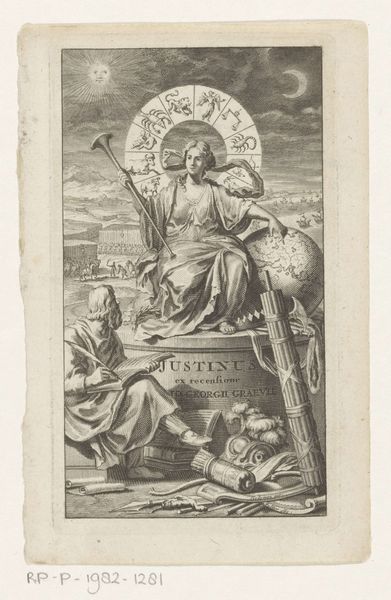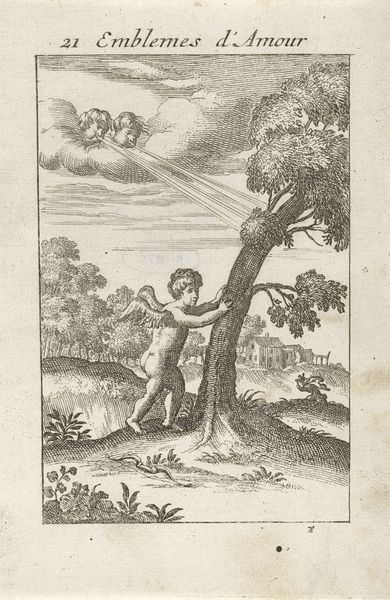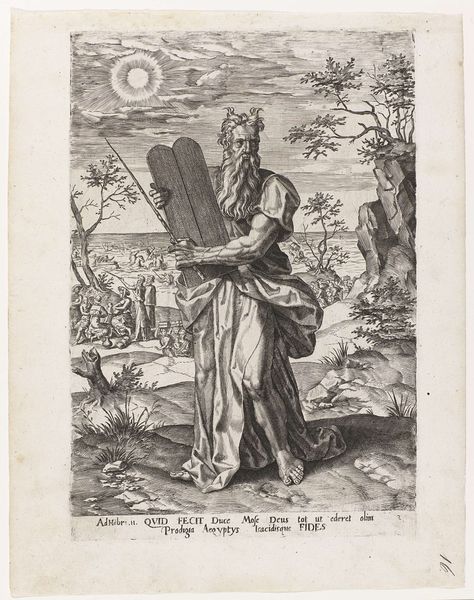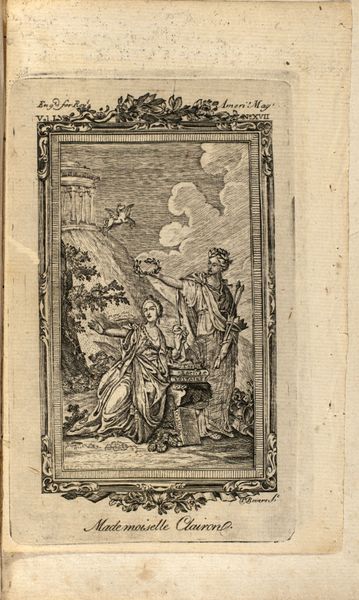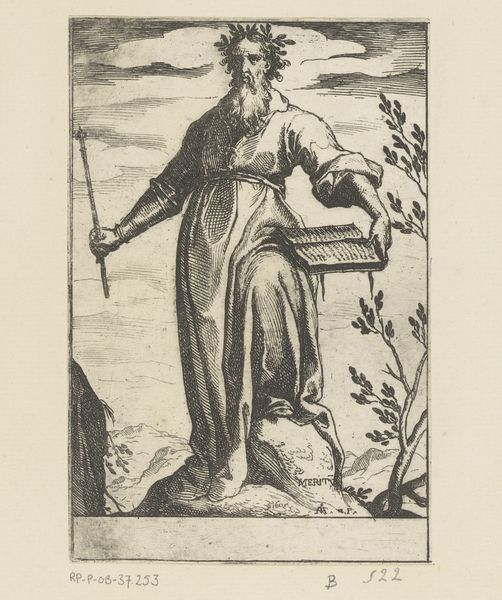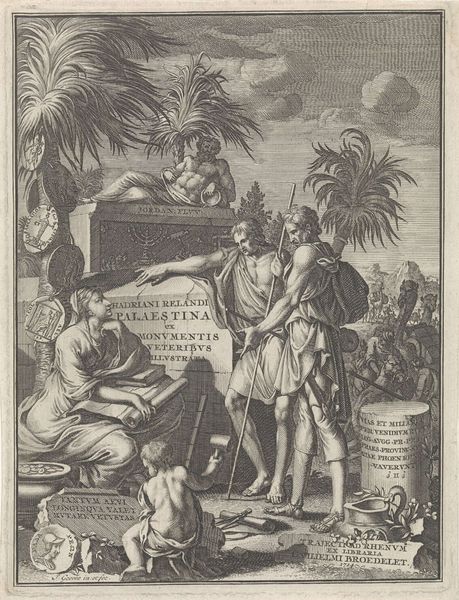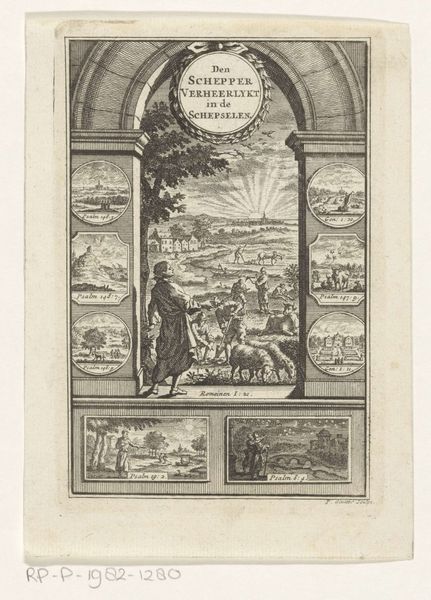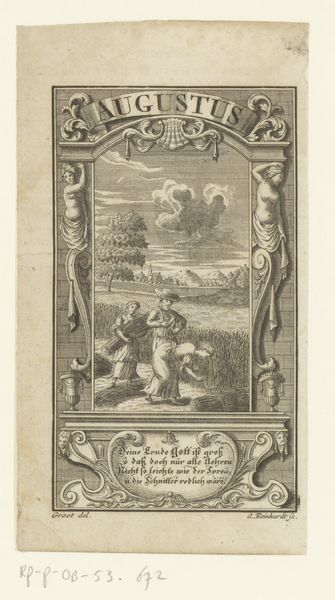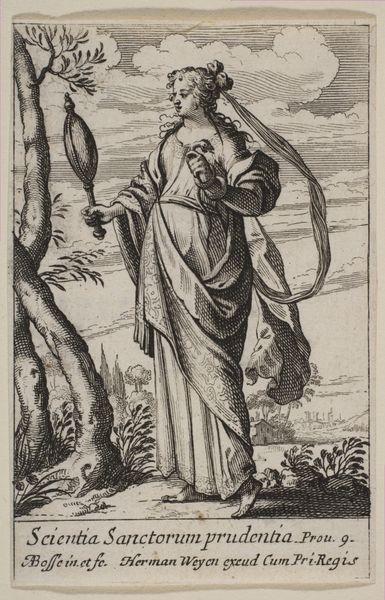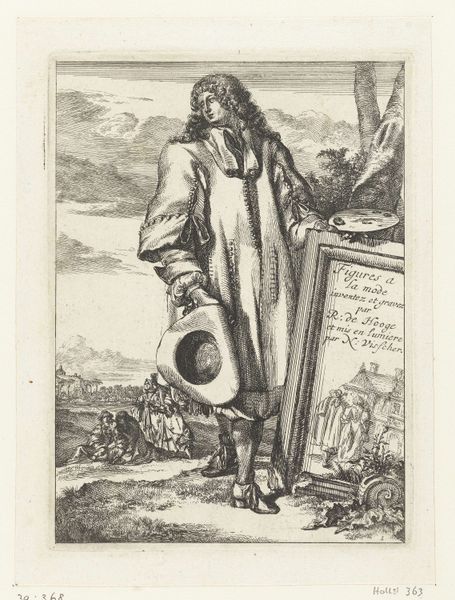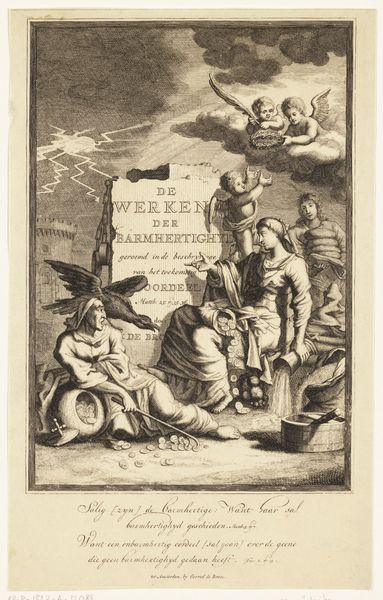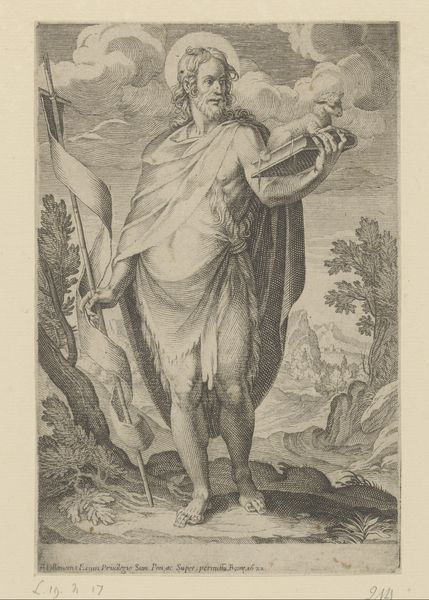
Dimensions: height 138 mm, width 86 mm
Copyright: Rijks Museum: Open Domain
This undated print by an anonymous artist depicts a woman with a cross and anchor by a palm tree and was made in Amsterdam. It served as the frontispiece for a book called "The Honeycomb of Oppressions". Prints like this, sold alongside books, were part of a growing print culture in the Dutch Republic. The symbols are rich with meaning. The cross and anchor represent faith and hope, while the palm tree can symbolize both paradise and resilience. These symbols offer solace in the face of oppression. The skulls and bones are a stark reminder of mortality, a common theme in Dutch art. The stormy sky contrasts with the radiant sun, perhaps representing the struggle between adversity and divine guidance. The artist uses a visual language understood by the public, drawing from religion, classical imagery and emblems. Prints had the potential to be powerful tools of communication, shaping public opinion and reflecting the social and political climate of the time. To truly understand this image, we can turn to archives, libraries, and collections like this one to study its context, and uncover the role of prints in shaping Dutch society.
Comments
No comments
Be the first to comment and join the conversation on the ultimate creative platform.
